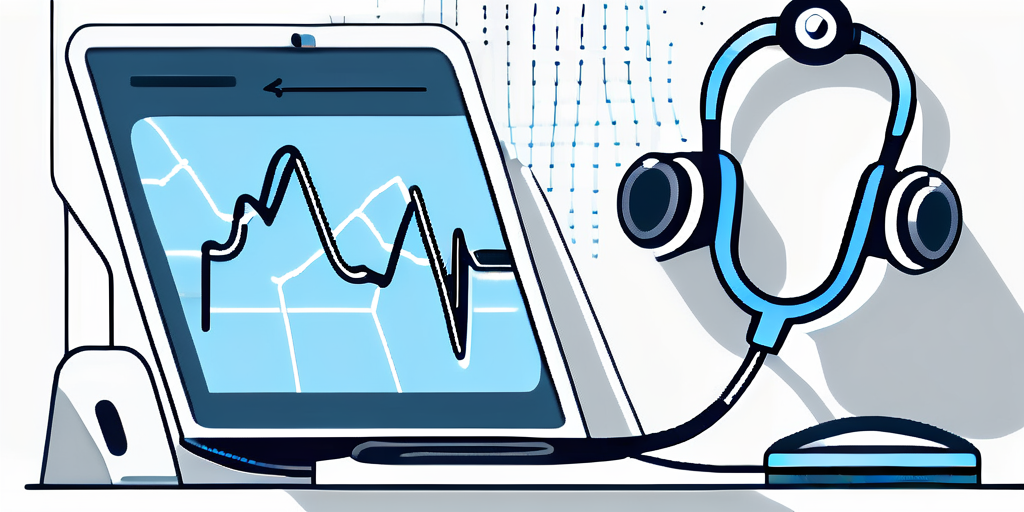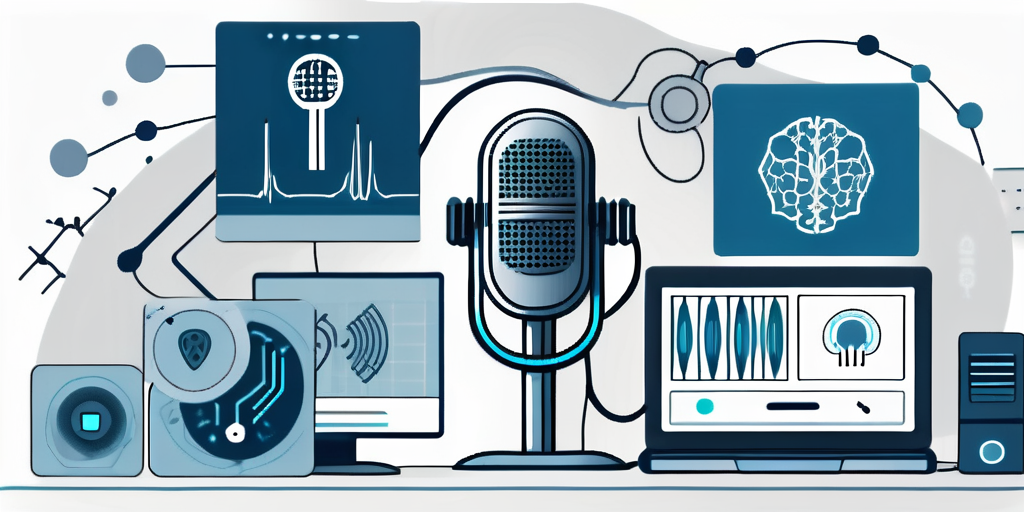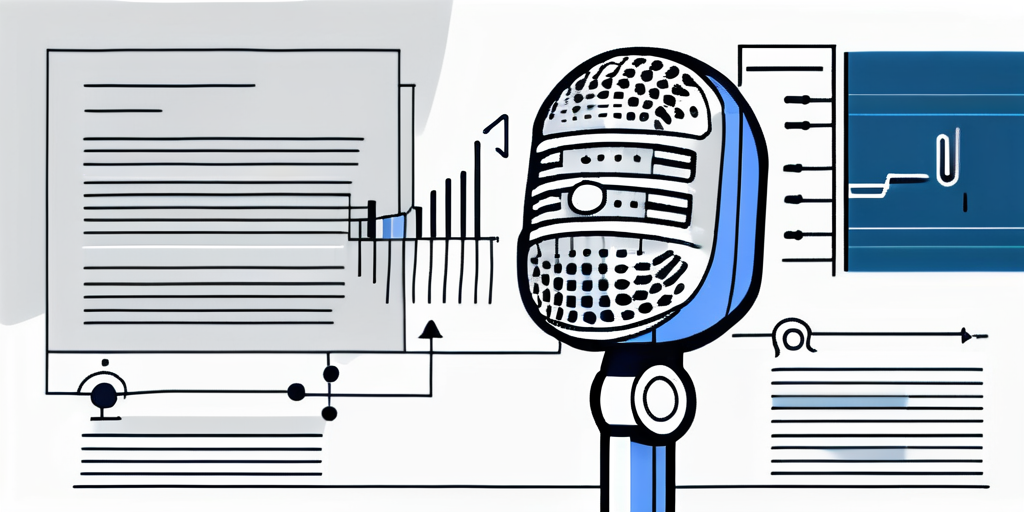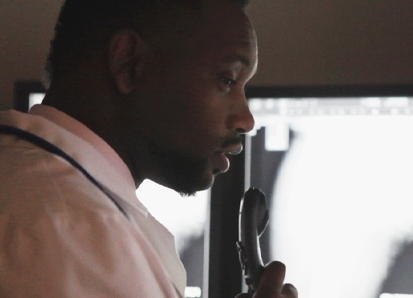In recent years, voice recognition software has become an integral part of the healthcare industry, revolutionizing the way radiology reports are generated. This technology has dramatically improved the speed and accuracy of reporting, benefiting both radiologists and patients. By harnessing the power of artificial intelligence and natural language processing, voice recognition software has transformed the landscape of radiology practice.
The Evolution of Voice Recognition Software in Healthcare
Voice recognition software in healthcare has come a long way since its inception. Initially, it was a rudimentary tool with limited capabilities. However, with advancements in technology, it has evolved into a sophisticated system that can accurately transcribe spoken words into text. This evolution has been driven by the need to provide radiologists with efficient and accurate reporting tools.

The Emergence of Voice Recognition Software
The emergence of voice recognition software in radiology can be traced back to the early 2000s. It was initially used as a means to expedite the transcription process by eliminating the need for traditional dictation and typing. This technology marked a significant shift in radiology reporting, as it allowed radiologists to dictate their findings directly into the computer system.
As voice recognition software began to gain traction in the healthcare industry, researchers and developers started to invest more resources into improving its accuracy and functionality. They worked tirelessly to refine the algorithms and train the software to recognize a wide range of medical terminologies and accents. This continuous improvement led to a significant increase in the software's accuracy, making it a reliable tool for radiologists.
Moreover, the integration of artificial intelligence (AI) into voice recognition software further enhanced its capabilities. AI algorithms enabled the software to learn and adapt to individual radiologists' speech patterns, improving accuracy and reducing errors. This personalized approach revolutionized the way radiologists interacted with the software, creating a seamless and efficient workflow.
Adoption and Utilization in Radiology
Over time, voice recognition software gained widespread adoption in radiology departments. Radiologists quickly realized the potential of this technology to enhance their workflow and improve report accuracy. The intuitive interface and ease of use made it a popular tool among healthcare professionals.
With the increasing utilization of voice recognition software, radiologists experienced a significant reduction in reporting time. The software's ability to transcribe spoken words into text in real-time allowed radiologists to generate reports more efficiently, ultimately improving patient care. This time-saving aspect also contributed to increased productivity, enabling radiologists to focus on other critical tasks.
Furthermore, voice recognition software has proven to be a valuable tool in reducing transcription errors. Traditional transcription methods involved the manual input of data, which often led to typographical errors or misinterpretation of dictations. The automated nature of voice recognition software eliminated these errors, ensuring accurate and reliable reports.
As the software continued to evolve, it expanded beyond radiology and found applications in other healthcare specialties. Surgeons, for instance, began using voice recognition software in the operating room to document procedures and create operative reports. This extension of voice recognition technology into different medical fields further showcased its versatility and potential to revolutionize healthcare documentation.
In conclusion, the evolution of voice recognition software in healthcare has been remarkable. From its humble beginnings as a simple transcription tool, it has transformed into a sophisticated system that streamlines the reporting process and improves accuracy. With ongoing advancements and integration of AI, voice recognition software is poised to continue revolutionizing healthcare documentation, benefiting both healthcare professionals and patients alike.
The Role of Voice Recognition Software in Radiology Reporting
Voice recognition software plays a crucial role in radiology reporting by enhancing both speed and efficiency. The benefits of this technology extend beyond time savings, as it also improves report accuracy and consistency.
Enhancing Speed and Efficiency
One of the primary advantages of voice recognition software is its ability to expedite the reporting process. Radiologists no longer need to spend valuable time typing or transcribing notes. Instead, they can dictate their findings directly into the software, which automatically converts speech into text. This streamlined workflow allows for faster report generation, ensuring timely and efficient patient care.
Imagine a busy radiology department with multiple patients waiting for their reports. The use of voice recognition software enables radiologists to quickly dictate their findings, eliminating the need for manual data entry. This not only saves time but also reduces the risk of errors that can occur during the transcription process. With the software accurately converting speech into text, radiologists can focus more on analyzing and interpreting medical images, ultimately improving patient outcomes.
Furthermore, voice recognition software offers a hands-free approach to reporting. Radiologists can simply speak their observations and diagnoses while reviewing images, eliminating the need to switch between different tasks. This seamless integration of voice recognition technology into the radiology workflow enhances efficiency and allows radiologists to work more comfortably and effectively.
Improving Report Accuracy
Voice recognition software has significantly improved the accuracy of radiology reports. With advanced algorithms and natural language processing capabilities, the software can understand and interpret complex medical terminology. This minimizes the risk of transcription errors and ensures that the final report reflects the radiologist's intended findings. Moreover, the software can learn and adapt to the radiologist's speech patterns over time, further enhancing accuracy.
Accuracy is paramount in radiology reporting, as even a small error can have significant consequences for patient care. Voice recognition software not only reduces the likelihood of errors caused by manual data entry but also enhances the precision of the report itself. The software's ability to accurately transcribe the radiologist's dictation ensures that the report contains the correct medical terminology and accurately represents the radiologist's observations.
Additionally, voice recognition software can assist radiologists in maintaining consistency across their reports. By recognizing patterns in the radiologist's speech and terminology, the software can suggest standardized phrases and terminology, ensuring uniformity in reporting. This consistency not only improves the overall quality of the reports but also facilitates easier comparison of findings over time, aiding in the detection of subtle changes in a patient's condition.
In conclusion, voice recognition software plays a vital role in radiology reporting by enhancing speed, efficiency, and accuracy. Its ability to convert speech into text expedites the reporting process, allowing radiologists to focus on analyzing and interpreting medical images. The software's advanced algorithms and natural language processing capabilities ensure accurate transcriptions, minimizing the risk of errors. Furthermore, voice recognition software promotes consistency in reporting, facilitating better patient care and long-term monitoring. As technology continues to advance, the role of voice recognition software in radiology reporting is expected to further evolve, leading to even greater improvements in patient outcomes.
The Impact of Voice Recognition Software on Radiology Report Accuracy
Voice recognition software has had a profound impact on the accuracy of radiology reports, greatly reducing the occurrence of transcription errors and improving consistency in reporting.
With the advancements in technology, the field of radiology has witnessed a significant transformation in recent years. One of the most notable developments is the introduction of voice recognition software, which has revolutionized the way radiologists create and document their reports. This innovative technology has not only streamlined the reporting process but has also had a positive impact on the overall accuracy of radiology reports.
Reduction of Transcription Errors
Prior to the introduction of voice recognition software, transcription errors were a common occurrence in radiology reports. Misheard words, typos, and other inaccuracies could lead to potential patient harm or misdiagnoses. However, with the adoption of voice recognition software, these errors have been significantly reduced.
The technology's ability to accurately convert speech into text has greatly improved the quality of radiology reports, ensuring the delivery of precise and reliable information. Radiologists can now dictate their findings directly into the software, eliminating the need for manual transcription. This not only saves time but also minimizes the chances of errors that can occur during the manual data entry process.
Moreover, voice recognition software often comes equipped with advanced features such as real-time feedback and error correction. These features allow radiologists to review and edit their reports as they dictate, ensuring that the final document is free from any inaccuracies. This level of accuracy and efficiency has significantly enhanced the reliability of radiology reports, leading to improved patient outcomes.
Ensuring Consistency in Reporting
Consistency in reporting is essential in radiology, as it allows for accurate comparison of images and facilitates effective communication among healthcare providers. Voice recognition software plays a vital role in ensuring this consistency.
By standardizing the language used in reports through customizable templates and glossaries, the software promotes uniformity across different radiologists and institutions. This not only improves the overall quality of reporting but also enhances patient care. With standardized templates, radiologists can ensure that all necessary information is included in the report, reducing the chances of omitting critical details.
Furthermore, voice recognition software allows for the integration of structured reporting, which enables radiologists to follow a predefined format when documenting their findings. This standardized approach not only improves the readability of reports but also facilitates data analysis and research. Researchers can easily extract and analyze data from a large number of reports, leading to valuable insights and advancements in the field of radiology.
In conclusion, voice recognition software has had a significant impact on the accuracy of radiology reports. By reducing transcription errors and ensuring consistency in reporting, this technology has improved patient care and enhanced the overall quality of radiology practice. As technology continues to evolve, it is likely that voice recognition software will play an even more prominent role in the field, further revolutionizing the way radiologists document and communicate their findings.
Challenges and Limitations of Voice Recognition Software in Radiology
Although voice recognition software offers numerous benefits, it is not without its challenges and limitations. Technical issues, software limitations, and training and adaptation challenges must be taken into account for effective utilization.

One of the main challenges faced by radiologists when using voice recognition software is the presence of technical issues. Like any technology, voice recognition software is not infallible. It may encounter technical issues that can temporarily disrupt the reporting process. These issues could include compatibility problems, software crashes, or other technical glitches. For example, there might be instances where the software fails to accurately transcribe the radiologist's dictation, leading to errors in the final report. Such technical issues can cause delays and frustration for radiologists, as they have to spend additional time correcting and verifying the transcriptions.
In addition to technical issues, voice recognition software also has its limitations. The software may have difficulty accurately recognizing certain accents or dialects, which can affect its overall performance. For instance, a radiologist with a heavy accent might find that the software consistently misinterprets their dictation, leading to inaccuracies in the transcriptions. It is crucial for radiologists and healthcare providers to be aware of these limitations and have contingency plans in place to ensure uninterrupted workflow. This might involve having alternative methods of reporting, such as manual typing, available as a backup option.
Training and Adaptation Challenges
Adapting to and effectively utilizing voice recognition software may require some training and adjustment. Radiologists and other healthcare professionals must familiarize themselves with the software's features, functions, and customization options. This includes learning how to navigate the user interface, understanding the different voice commands and shortcuts, and customizing the software to suit their individual preferences and workflow. It may take time for radiologists to become proficient in using the software and to develop a comfortable dictation style that ensures accurate transcriptions.
Furthermore, radiologists must learn to dictate clearly and enunciate properly to ensure accurate transcriptions. This can be particularly challenging for those who are not accustomed to dictating their reports or who have a fast-paced speaking style. It may require conscious effort and practice to slow down and articulate each word clearly. Radiologists may also need to adapt their dictation style depending on the complexity of the case or the specific requirements of the report. For example, when dictating a report for a complex imaging study, they may need to provide more detailed descriptions and use specific medical terminology.
While the learning curve may initially pose challenges, the long-term benefits of improved efficiency and accuracy outweigh the initial investment of time and resources. Voice recognition software has the potential to significantly streamline the reporting process in radiology, allowing radiologists to generate reports more quickly and with greater accuracy. It can also help reduce the risk of repetitive strain injuries associated with manual typing. With proper training and adaptation, radiologists can harness the full potential of voice recognition software to enhance their productivity and improve patient care.
The Future of Voice Recognition Software in Radiology
The future of voice recognition software in radiology is filled with potential developments and innovations that will further enhance its impact on report accuracy and patient care.

Potential Developments and Innovations
As technology continues to advance, voice recognition software is likely to become even more sophisticated. Future developments may include improved speech recognition algorithms, enhanced natural language processing capabilities, and integration with other emerging technologies such as machine learning and artificial intelligence. These advancements will further optimize the accuracy and efficiency of radiology reporting, ultimately benefiting both radiologists and patients.
Implications for Radiology Practice
The growing prevalence of voice recognition software in radiology will have far-reaching implications for the practice as a whole. Radiologists will be able to focus more on clinical decision-making and patient interaction, as their reporting time decreases significantly. Moreover, the accurate and timely generation of radiology reports will enable other healthcare professionals to make informed treatment decisions promptly, leading to improved patient outcomes.
In conclusion, voice recognition software has profoundly impacted the accuracy of radiology reports. By improving efficiency, minimizing transcription errors, and ensuring consistency in reporting, this technology has transformed radiology practice. While challenges and limitations exist, ongoing advancements and future innovations hold great promise for the continued evolution of voice recognition software in the field of radiology.







